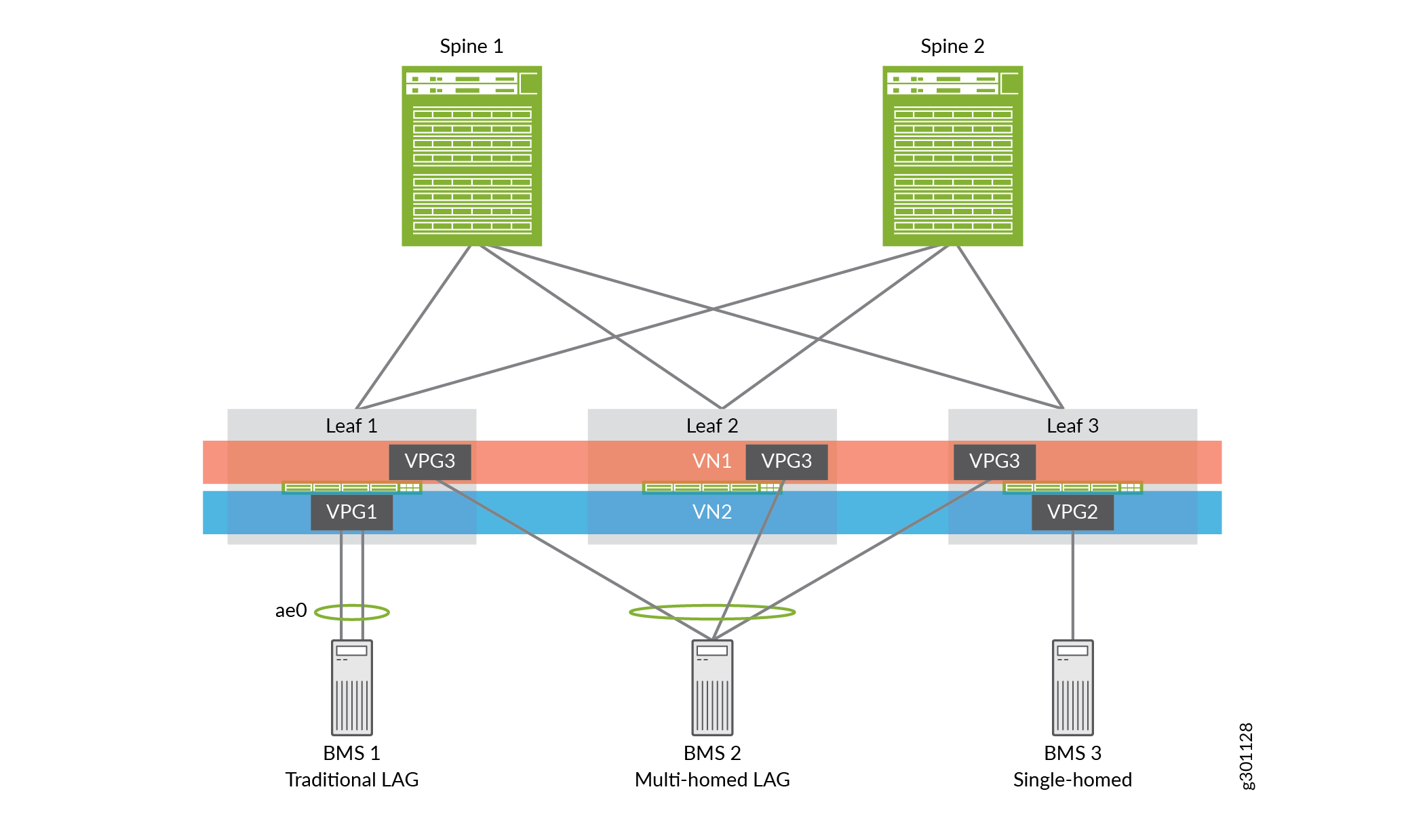Virtual Port Groups
In Contrail Networking, a virtual port group (VPG) is a group of one or more physical interfaces attached to one or more virtual network interfaces. Each virtual network interface object corresponds to a VLAN ID and is attached to a Virtual Network (VN).
A virtual network interface is a virtual representation of a physical network interface, which may correspond directly to a network interface controller. In network virtualization, this enables a system to store the information and operate on the virtual interfaces independently, without involving the physical interfaces.
A VPG enables you to select multiple interfaces on the same device or on different devices. A VPG is similar to the link aggregation group (LAG) but supports both LAG and multihoming depending on whether you select the interfaces on the same devices or on different devices. A LAG is automatically created if you select more than one interface on the same device.
In LAG configuration, one or more physical interfaces on a switch (a QFX Series device) become members of a link aggregation group (LAG). The LAG is connected to the virtual network interface of a VN, where the bare metal server is deployed.
Figure 1 shows how the interfaces belonging to two devices are grouped using a LAG configuration. VPG1 is a traditional LAG configuration and VPG2 is a single-homed LAG configuration. VPG3 is a virtual port group, which groups the physical interfaces on two QFX Series devices using multi-homed LAG configuration.

Depending on whether VLAN-ID Fabric-Wide Significance field is selected or not, the behavior of virtual port groups is different in enterprise style (VLAN-ID Fabric-Wide Significance option enabled) and service provider style (VLAN-ID Fabric-Wide Significance option disabled) configurations.
In enterprise style configurations, the field VLAN-ID Fabric-Wide Significance is enabled and you can associate one VLAN ID only to one virtual network. Once you assign a VLAN ID to a virtual network, the VLAN ID field is greyed out because the VLAN ID has a one-to-one correspondence with the virtual network and cannot be assigned to another virtual network. This is to ensure that the same VLAN ID is not associated with more than one virtual network within the same enterprise style fabric. Also, you can use only one untagged VLAN within the same VPG. Once you select a virtual network, you cannot select the same virtual network again unless it is an untagged virtual network. However, the VLAN ID must be the same.
In service provider style configuration, the field VLAN-ID Fabric-Wide Significance is disabled and there is no restriction on the VLAN IDs to be assigned to virtual networks.
Unlike in enterprise style configuration, you can select the same virtual network twice. However, you must assign different VLAN ID to each to make it clearer since you can select the same virtual network twice in different VPGs.
Change History Table
Feature support is determined by the platform and release you are using. Use Feature Explorer to determine if a feature is supported on your platform.
